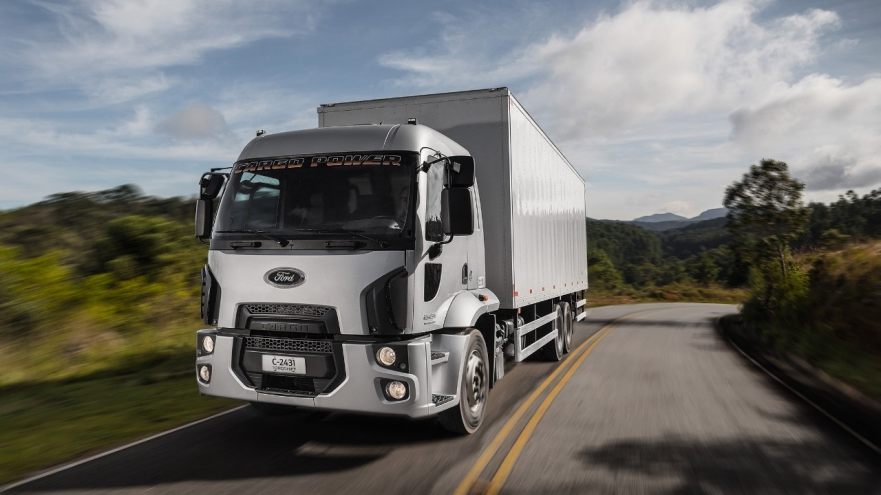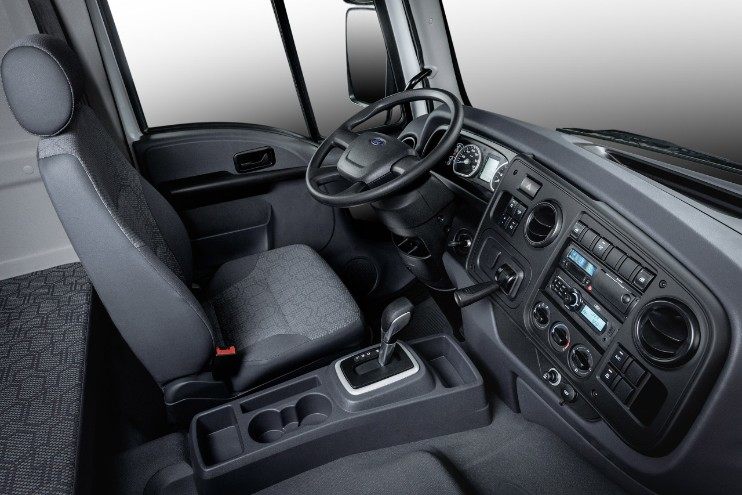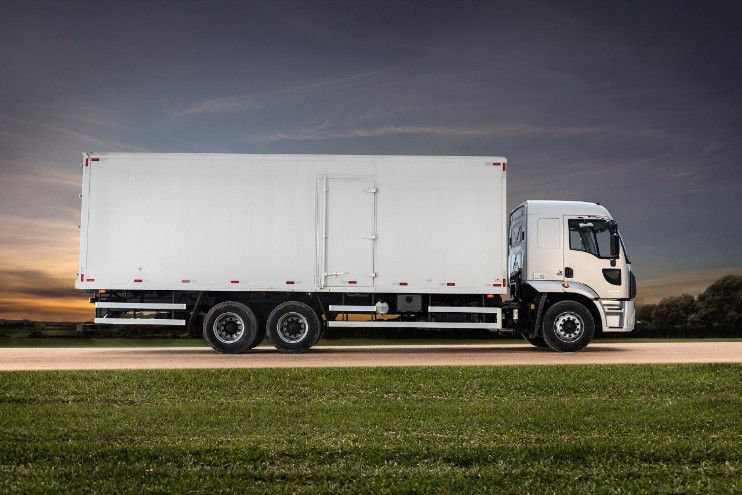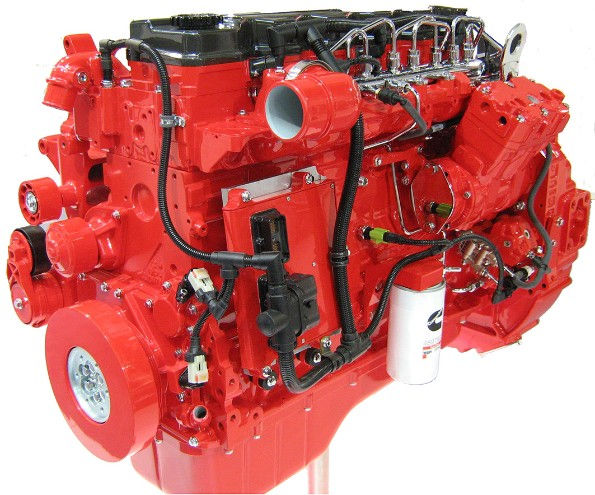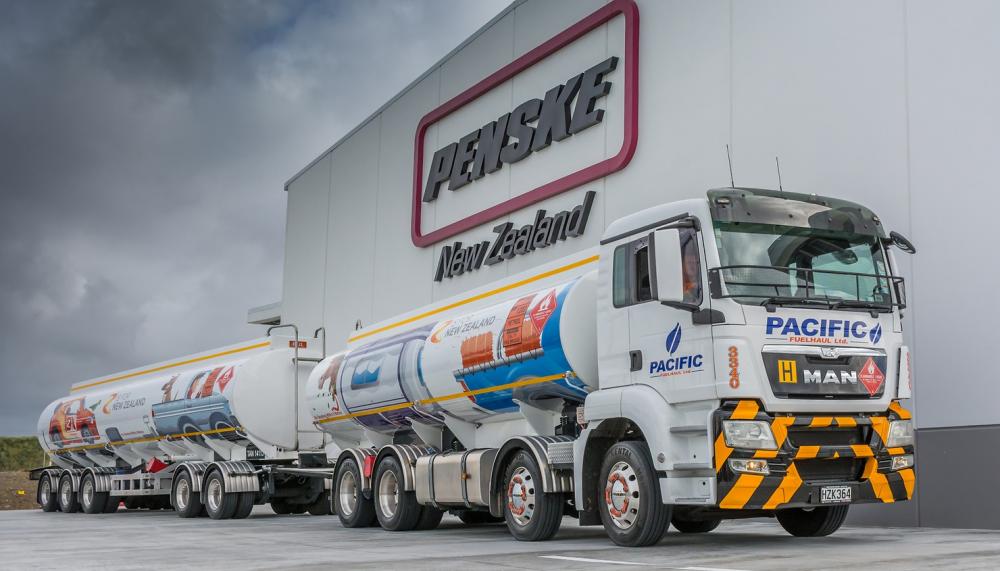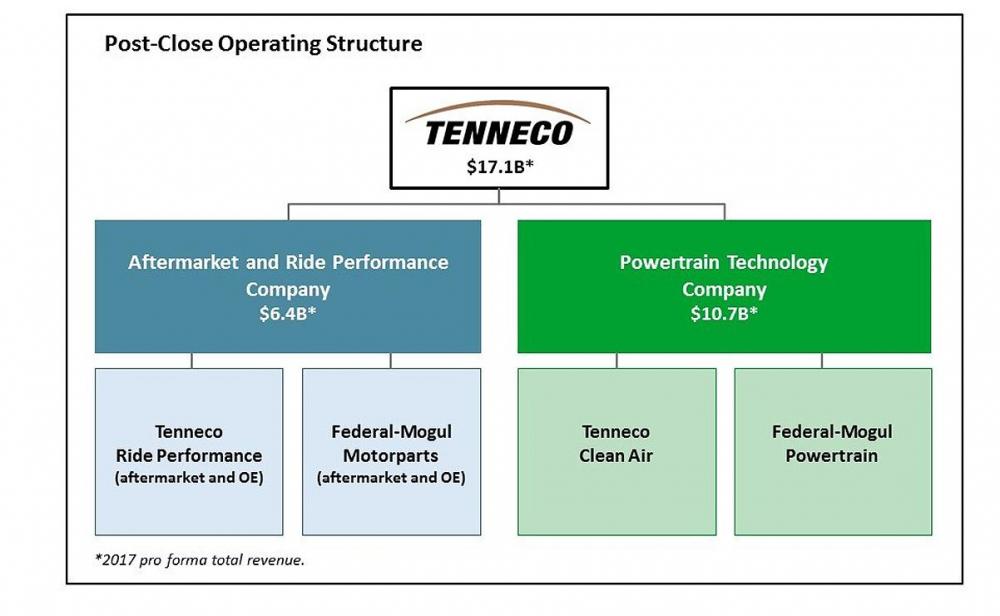
kscarbel2
Moderator-
Posts
18,885 -
Joined
-
Days Won
114
Content Type
Profiles
Forums
Gallery
Events
Blogs
BMT Wiki
Collections
Store
Everything posted by kscarbel2
-
1993 DM630S Dayton to Hub Piloted on front
kscarbel2 replied to jeremy.thames's topic in Driveline and Suspension
A Mack truck was a "custom built" truck. They were not all the same.....there were many, many variations. The only way to get the "correct" parts, i.e. the parts the truck would have been built with if spec'd with discs, is to have a changeover request submitted. Any other route is a guessing game. -
1993 DM630S Dayton to Hub Piloted on front
kscarbel2 replied to jeremy.thames's topic in Driveline and Suspension
Contact the parts dept. at your Mack brand dealer with your model and serial number, and have them submit a changeover request to Mack’s specifications dept. They will receive information allowing them to correctly order the parts required for you (the parts the truck would have had it been ordered/built that way. -
Ford Trucks Press Release / April 11, 2018 Ford Trucks launches the Cargo Power 2431 6x2, equipped with a new powertrain offering the best combination of performance and economy for maximum profitability With a gross weight of 24 metric tonnes, the 2431 is equipped with the new 306 horsepower version of the popular 6.7-liter Cummins ISB, the most powerful engine on the market up to 7 liters - and has the option of manual transmission or automated "Torqshift" AMT. TATUÍ, SÃO PAULO - Ford Trucks is launching the new Cargo Power 2431 6x2, featuring a new powertrain offering optimized performance and economy for maximum carrier profitability. "The new Cargo Power 2431 is a great launch that reinforces our proposal to bring innovative products to the market, with solutions focused on their real needs," says João Pimentel, director of Ford Trucks Operations in South America. The truck was developed based on customer feedback for a more powerful and efficient vehicle without giving up the economy, to be leader in the segment. " Launch Offer As a special launch offer, Ford will sell the first 500 units of the new 306-hp trucking for the same price as the 290-hp model. In addition, the brand provides a subsidized financing program for its entire 6x2 line, with special conditions that facilitate the acquisition. It is offered in the form of direct consumer credit (CDC) with a rate of 0.96% for payment in 48 months, with a 20% and 90 day grace period. Customer Voice The Cargo Power 2431 truck is produced in versions with 9-speed manual transmission or 10-speed Torqshift automated transmission. It was developed from an extensive research with transporters on the main routes of Brazil, improving the characteristics that they seek more in the performance of the vehicle. His project is the result of a two-year work that involved 400,000 miles of development and durability testing in both Brazil and in high altitude regions of South America using Ford Truck's extensive engineering expertise. The new ISB 6.7 engine, at 306 hp (@ 2,100 rpm) and 1,100 Nm torque, is the most powerful on the market in the 7-liter range and uses advanced technology to deliver high torque already at low speed, available in a wide range of 1,100 at 1900 rpm. With this, it ensures greater agility in the retakes and safety in the overtaking, with consumption equal or less than the competing models. Another advantage of the new engine is the emission treatment system with Arla [aka. AdBlue, DEF]. In addition to improving engine performance and durability, it has greater tolerance to fuel variability and a lower overall cost compared to competitors with the EGR system. Complete assistance The new Cargo Power 2431 has the complete after-sales service of the more than 100 Ford Truck distributors in Brazil, with a concept focused on speed, quality and fair price. The model features a new Ford Service maintenance package that offers three customer contract options, including revisions (Class), revisions and wear items (Plus) or complete assistance (Prime). Cargo Power also comes pre-factory with the Fordtrac enabled telemetry system, which includes monitoring and safety functions, and will have a monitoring center in the future to monitor the vehicle in real time with support staff. New line Cargo Power 2431 is the flagship of Ford's new Cargo and Power Cargo line, consisting of six models equipped with the new 306-hp engine and capacity from 17 to 31 tonnes gross total weight with 4x2, 6x2 , 6x4 and the unpublished 8x2, which will be presented shortly. It includes models: Cargo Power 1731 rigid, Cargo Power 1731T tractor, Cargo Power 2631 6x4, Cargo Power 3131 6x4 and Cargo Power 3031 8x2 with manual transmission or automated Torqshift. Ford will also continue to offer the 2929 6x2 Cargo 2929 option, which was the third-largest seller in the segment last year with 1,007 units. "Our goal with the launch of the Cargo Power line is to gain leadership in the 6x2 segment and achieve an average 25% stake in trucks with a hard chassis," said Guilherme Teles, Ford Truck's Marketing Manager. The brand works this year with a projection of growth of the order of 22% in the segment of trucks with rigid chassis and estimates an advance of 43.5% in the total of the industry, with 74,000 units. .
-
MAN Truck & Bus Press Release / April 3, 2018 Meeting the requirements of modern city transportation: the MAN EfficientHybrid. The new MAN Lion’s City is optionally available with an intelligent energy management system. The main component is a robust and wear-free electric motor which is installed in the driveline between the engine and the gearbox. Find more information on our website: https://go.man/7SjgkUvd .
-
MAN Truck & Bus Press Release / April 11, 2018 The perfect City Bus. We welcome the new MAN Lion's City Bus. .
-
MAN Truck & Bus Press Release / April 10, 2018 With the delivery of 36 new MAN vehicles, the New Zealand freight forwarder, TIL Logistics Ltd, has the largest MAN fleet in Australasia. It is made up of around 200 MAN trucks The delivery consisted of various models of MAN TGS and TGX vehicles between 480 and 540 hp Penske Commercial Vehicles is the supplier – MAN importer in Australia and New Zealand MAN is gaining prominence in the Australian and New Zealand market The New Zealand freight forwarder, TIL Logistics Ltd, which has its headquarters in New Plymouth, uses the 36 new MAN TGS Euro 5 models with M cab and MAN TGX models with XL cab for a range of different tasks. One of these tasks is transporting mineral oil. The maximum gross weight of the truck and trailer is 50 tonnes. The maximum length is 23 metres. The four-axle MAN TGS 35.540 8x4 BL tractor vehicle transports 20,000 litres of diesel. “Our drivers like the trucks, the fuel economy is a huge plus and I have received many comments about how great the trucks look – which is a big positive for our company image,” said a pleased Jim Ramsay, Managing Director of TIL Logistics Ltd. at the vehicle handover. “We knew that safety and technology features were important, as was reliability, fuel economy and low whole of life costs,” Dean Hovered of Penske New Zealand knew this from his long-standing business relationship with the freight forwarder. In January 2018, Penske Commercial Vehicles announced a new record for the Australian commercial vehicle market with 109 sales concluded. .
-
Matt Cole, Commercial Carrier Journal (CCJ) / April 10, 2018 Two separate recalls from Daimler Trucks North America and Navistar have resulted in more than 7,600 Western Star and International tractors being recalled, according to National Highway Traffic Safety Administration documents. DTNA is recalling approximately 7,128 model year 2017-2019 Western Star 4700, 4900, 5700 and 6900 trucks for a potential electrical issue. The affected trucks have a power stud that passes through the bulkhead, which could contact the bulkhead, resulting in an electrical arc. DTNA says an electrical arc can cause a fire. Daimler will begin notifying owners of affected trucks on May 21. Dealers will inspect the power stud for the proper clearance to the bulkhead and replace it if needed. Owners can contact DTNA customer service at 1-800-547-0712 with recall number FL-766. NHTSA’s recall number is 18V-191. Navistar also announced a recall that affects approximately 527 model year 2018-2019 International LT trucks. In the affected trucks, when the hood is closed, the fender splash panel could rub on the inlet fuel line fitting to the fuel/water separator, causing damage to the fitting and possibly resulting in a fuel leak. A fuel leak in the presence of an ignition can cause a fire, and fuel leaking onto the roadway can increase the risk of a crash, NHTSA says. Navistar will begin notifying affected truck owners on May 25. Dealers will trim the splash panel and replace the fuel/water inlet line if it is damaged. Owners can contact Navistar customer service at 1-800-448-7825 with recall number 18503. NHTSA’s recall number is 18V-199.
-
Chevy to launch all-new 2020 Silverado HD in fall 2019 Richard Truett, Automotive News / April 10, 2018 With profits from pickups more important than ever as sales of cars fade, Chevrolet is making sure one of its biggest cash cows won’t ever get old. Chevrolet said the next-generation Silverado HD will debut next year as a 2020 model. Chevrolet on Tuesday released the first teaser image of the 2020 heavy-duty Silverado. Heavy duty pickups, often kitted out with opulent luxury features, are some of the most profitable vehicles sold by General Motors, Ford and Fiat Chrysler Automobiles. Chevrolet has been left in the dust by Ford, which has opened up new market segments with such vehicles as the ultraluxurious F-450 Super Duty Limited 4X4, which can top six figures once sales taxes are added. In addition to consumer versions of the Silverado 2500 and 3500, Chevrolet is moving to directly challenge Ford with all-new versions of Silverado 4500 and 6500 chassis cab medium-duty trucks. These models are sent to upfitters who use the chassis for ambulances and other commercial vehicles. Ram offers a 4500 chassis cab model. The 2020 Silverado HD will be built in Flint, Mich., and production is scheduled to start in the third quarter of 2019, Chevrolet says. Ram also plans to offer a freshened version of its heavy-duty pickup next year.
-
Automotive News / April 10, 2018 Automotive supplier Tenneco Inc. has reached a definitive agreement to acquire Federal-Mogul in a transaction valued at $5.4 billion. The deal, which will be financed through $800 million in cash, about 30 million Tenneco shares and assumption of debt, will result in two independent publicly traded companies following closing, Lake Forest, Ill.-based Tenneco said in a news release. The acquisition is expected to close in the second half of this year, subject to regulatory approvals, with the separation occurring in the second half of 2019. "This is a landmark day for Tenneco with an acquisition that will transform the company by creating two strong leading global companies, each in an excellent position to capture opportunities unique to their respective markets," Tenneco CEO Brian Kesseler said in the release. "Federal-Mogul brings strong brands, products and capabilities that are complementary to Tenneco's portfolio and in line with our successful growth strategies. Unleashing two new product focused companies with even stronger portfolios will allow them to move faster in executing on their specific growth priorities." The transaction stands to shake up the world of aftermarket parts retailing. Federal-Mogul's parts portfolio features numerous household names such as Champion spark plugs, Wagner brakes, ANCO wiper blades, Moog steering and suspension parts, Goetze engine parts and Ferodo brake pads. Popular brands under the Tenneco portfolio include Monroe shock absorbers, Walker exhaust systems, Rancho suspensions and DynoMax mufflers. The two new companies will be born after the union of Tenneco and Federal-Mogul -- one a $6.4 billion aftermarket supplier and the other a $10.7 billion powertrain technology supplier, the company said. Following the split, it's expected that headquarters for each company will remain in the Detroit and Chicago areas, but a decision on which one would go where has not been made, Bill Dawson, executive director of communications for Tenneco, said in an email. No determinations on maintaining workforce have been made, Dawson said, but noted the companies don't overlap on products. "It's too early to talk about any integration changes, but it is important to remember that Tenneco's and Federal-Mogul's products and technologies are highly complementary," Dawson said in a email. "We do not manufacture or engineer the same products as Federal-Mogul's Motorparts and Powertrain businesses." Tenneco shares rose 4 percent to close the day at $57.82. More than a century Federal-Mogul has a long history. The company traces its roots to 1899, the founding year for the Muzzy Lyon Co., which sold mill supplies and rubber goods, but shortly thereafter began a metalworking subsidiary to make bearings. Federal-Mogul was formed in 1924, when Muzzy-Lyon merged with Federal-Bearing and Bushing. The Tenneco deal is the latest among a trend of suppliers splitting themselves. Aptiv Plc and Delphi Technologies Plc formed as a result of the former Delphi Automotive Plc breaking up last year. Autoliv Inc., the Swedish-American airbag and seatbelt maker, is spinning off its driverless-electronics business and Germany’s Continental AG is considering a shakeup of its structure. The transaction also is reminiscent of the megamerger between global chemical giants DuPont Co. and Dow Chemical Co., which closed in September 2017. The transaction calls for splitting DowDuPont into three companies focused on agricultural products, materials and chemicals, and technology-based special products. The company said it aimed to complete the split in 18 months from closing. Icahn's role The deal marks a major payoff for billionaire investor Carl Icahn, who has sought to monetize his investment in Federal-Mogul since 2007, when he purchased unsecured Federal-Mogul bonds before its bankruptcy and eventually swapped them for equity as part of the company's reorganization plan. In early 2017 and after nearly a year of posturing with Federal-Mogul's shareholders, Icahn took full ownership of Federal-Mogul in a roughly $300 million deal. Icahn Enterprises LP, through his indirect wholly owned subsidiary IEH FM Holdings LLC, sealed the deal after Federal-Mogul's second-largest shareholder, Gabelli Asset Management Company Investors, tendered 7 million shares to Icahn, providing enough shares to take over the public company outright, Bloomberg reported. "Icahn Enterprises acquired majority control of Federal-Mogul ... when we saw an out-of-favor market opportunity for a great company," Icahn said in a statement. "During that time, we have built one of the leading global suppliers of automotive products. I am very proud of the business we have built at Federal-Mogul and agree with Tenneco regarding the tremendous value in the business combination and separation into two companies. We expect to be meaningful stockholders of Tenneco going forward and are excited about the prospects for additional value creation." Tenneco posted $9.27 billion in total revenue in fiscal 2017 and reported net income of $274 million. Together, General Motors and Ford Motor Co. comprised more than a quarter of the company's sales last year. Federal-Mogul posted $7.43 billion in total sales in 2016 and $82 million in net income, the latest year available. In 2015 it had a $110 million loss, and a $168 million loss in 2014. None of Federal-Mogul's customers in 2016 accounted for more than 10 percent of its overall revenue, the company said in its annual report. Tenneco ranks No. 31 on the Automotive News list of the top 100 global suppliers with worldwide sales to automakers of $7.35 billion in 2016. Federal-Mogul ranks No. 46 on that list, with estimated sales to automakers of $5.16 billion in 2016. .
-
When you contacted your Mack brand dealer, what did they say?
-
Ford recalls 2018 big pickups, SUVs for transmission glitch, rollaway risk Michael Martinez, Automotive News / April 6, 2018 DETROIT -- Ford Motor Co. on Friday issued a recall for 2018 model year F-150 pickups and Expedition SUVs with 10-speed automatic transmissions for a potentially unseated transmission gear shift cable clip. The recall also covers 2018 model year F-650 and F-750 pickups with six-speed automatic transmissions. About 347,000 vehicles are affected. In the affected vehicles, a clip that locks the gear shift cable to the transmission may not be fully seated. That could allow the transmission to be in a different gear from the one selected by the driver. In some instances that could mean the vehicle may not be in park even when the driver shifts to park and turns off the ignition, which could cause unintended vehicle movement. There would not be any warning chimes or messages, since the shifter would be in the proper position. Ford said it's aware of one reported accident and injury involving the issue. Here's where the affected vehicles were made. 2018 Ford F-150 pickups built at Dearborn Assembly Plant, Jan. 5, 2017 to Feb. 16, 2018. 2018 Ford F-150 pickups built at Kansas City Assembly Plant, Jan. 25, 2017 to Feb. 16, 2018. 2018 Ford Expedition SUVs built at Kentucky Truck Plant, April 3, 2017 to Jan. 30, 2018. 2018 Ford F-650 and F-750 medium trucks built at Ohio Assembly Plant, April 25, 2017 to March 9, 2018. Second recall Ford on Friday also issued a recall for about 161 2017-18 model year F-150 pickups, 2018 Expedition SUVs, 2018 Lincoln Navigator SUVs and 2018 Mustang cars with 10R80 transmissions for a potentially missing roll pin that attaches the park pawl rod guide cup to the transmission case. The issue could lead to the vehicles eventually losing their park function even when the shifter and instrument panel display indicate the vehicle is in park, leading to unintended movement without any warnings. Here's where the affected vehicles were made: 2017-18 F-150 pickups built at Dearborn Assembly Plant, Oct. 20, 2016 to March 5, 2018. 2017-18 F-150 pickups built at Kansas City Assembly Plant, Dec. 22, 2017 to Feb. 26, 2018. 2018 Expedition SUVs built at Kentucky Truck Plant, Nov. 28, 2017 to Feb. 14, 2018. 2018 Mustang vehicles built at Flat Rock Assembly Plant, Nov. 6, 2017 to Feb. 12, 2018. 2018 Lincoln Navigator SUVs built at Kentucky Truck Plant, Dec. 13, 2017 to March 8, 2018.
-
For operations that require a Class 6 or 7 for occasional use (not every day run hard), of which there are many, the low-cost Ford medium is worth consideration, particularly with the gasoline option.
-
The Mack brand MHD is way overpriced, and for that reason sales are dismal. Most fleets that run a truck in daily commercial operation would never buy the Ford mediums.
-
What is your thought process behind comparing Ford F-650 Class 6 sales and Mack brand Class 8 sales.
-
I liked the Taurus SHO. Many are unaware the engine was contract engineered by Yamaha. Like UK-based Ricardo and Austria-based AVL, Yamaha actually does quite a bit of engineering under contract for global vehicle manufacturers.
-
As has been noted, the Taurus used to outsell the Toyota Camry. (The Taurus's 2006 replacement, the Ford Five Hundred, was a flop on arrival. That Ford can not compete with Toyota speaks volumes about the levels of incompetence within management. This is the Ford that gave away the HN80 to the Germans, giving away a US$500 million investment and America's then most advanced commercial truck platform for a mere $200 million. This is the Ford that abandoned the North American mid-sized pickup segment for seven years, that abandoned the Bronco brand for 24 years, has yet to bring the global market Everest to America, and brought the trouble-free global market Kuga to the US (as the Excape) only after adding an engine fire package.
-
Ford, GM to drop 4 car nameplates Automotive News / April 4, 2018 General Motors and Ford Motor Co. plan to discontinue four slow-selling car models, including the venerable Ford Taurus sedan, The Wall Street Journal reported, citing people familiar with the matter. GM will stop production of the subcompact Chevrolet Sonic by as early as this year, and is planning to discontinue the Chevrolet Impala in the next few years, the Journal said. It also reported that Ford will stop making the Fiesta small car for the U.S. market by as early as next year, and discontinue the Taurus, once the top-selling car in America. Overall, U.S. sales of new cars are down nearly 11 percent this year and are on track to drop for the fifth straight year in 2018. Automotive News, in its annual Future Product series last summer, reported the Sonic, Impala, Fiesta and Taurus were widely expected to be discontinued at the end of their current product cycles. The Detroit News in July also reported that Ford and GM were looking to stop production of those vehicles. "Nothing formal to report today," Steve Majoros, marketing director for Chevrolet's cars and crossovers, told reporters on Wednesday when asked about the Journal report. "But I would say for all three of those products [Sonic, Impala and Volt] we are committed to those. They're a part of our portfolio today, they'll be a part of our portfolio here in the future. "Every car we have in our portfolio plays a role, every car's important and you know the only way we're going to stay the fastest-growing brand is to keep providing the vehicles that people want. So they're a part of our portfolio and they're going to continue." U.S. sales of the Sonic have fallen 21 percent to 5,983 vehicles this year while Impala deliveries have plunged 36 percent to 14,067. Taurus deliveries are off 25 percent this year in an overall large car market that has shrunk 12 percent. The Taurus debuted in 1985 but was dropped in 2006 in favor of the Five Hundred sedan. Former Ford CEO Alan Mulally revived the Taurus name for the 2008 model year. Fiat Chrysler Automobiles has already pared the Dodge Dart small car and Chrysler 200 midsize sedan from its U.S. product portfolio to better focus on light trucks. The move to drop car nameplates comes at a time when U.S. consumers are increasingly shunning sedans and coupes in favor of crossovers, pickups and SUVs. Last month, Ford disclosed plans to pad its product portfolio with more light trucks, and add more hybrid and pure electric vehicles. Ford late last year began telling suppliers it is ending North American production of the Fusion midsize sedan, which Automotive News reported in December. “As we have said, by 2020 trucks and utilities – including their electrified versions – are going to be almost 90 percent of our volume. Passenger cars, including Fiesta and Taurus, remain an important part of our lineup,” Ford spokesman Mike Levine said in a statement Wednesday, in response to a question about the Fiesta and Taurus. Ford’s Lincoln luxury brand last week unveiled a production preview of the all-new Aviator crossover that’s expected to be built at Ford’s Chicago Assembly Plant next year, which also builds its sibling Explorer crossover and the Taurus. Last month, GM unveiled a revamped luxury Sierra pickup, intensifying the battle among the Detroit 3 for fat profits at the top end of a highly lucrative segment.
-
Heavy Duty Trucking / April 3, 2018 Navistar International announced that Friedrich W. Baumann has joined the company as senior vice president, strategy, and planning. Baumann will lead Navistar’s strategic planning, product planning and analytics teams and will also oversee Navistar’s alliance with Volkswagen Truck and Bus. "Friedrich is a proven leader whose breadth of international, corporate and operating experience in our industry will serve Navistar well as we build on our momentum for continued long-term success," said Troy A. Clarke, Navistar's chairman, president, and chief executive officer. "We are confident that Friedrich will drive great ideas and bring new perspectives to our strategy and planning function as we pursue sustainable, profitable growth." Prior to joining Navistar, Baumann worked for 24 years at Daimler Trucks where he most recently served the role of senior vice president at Daimler Trucks North America. "I am eager to be joining Navistar at this exciting time in the company's history," said Baumann. "Troy and the team have done a great job of positioning Navistar for long-term success and I look forward to doing my part in further developing this winning culture and working with the entire team to drive growth, market leadership and sustainable profitability because of uncompromising customer dedication."
-
Notice in the video mention of legendary Swiss truckmaker Saurer. Without Saurer, the International Motor Company (aka Mack) would never have gotten airborne.
BigMackTrucks.com
BigMackTrucks.com is a support forum for antique, classic and modern Mack Trucks! The forum is owned and maintained by Watt's Truck Center, Inc. an independent, full service Mack dealer. The forums are not affiliated with Mack Trucks, Inc.
Our Vendors and Advertisers
Thank you for your support!



